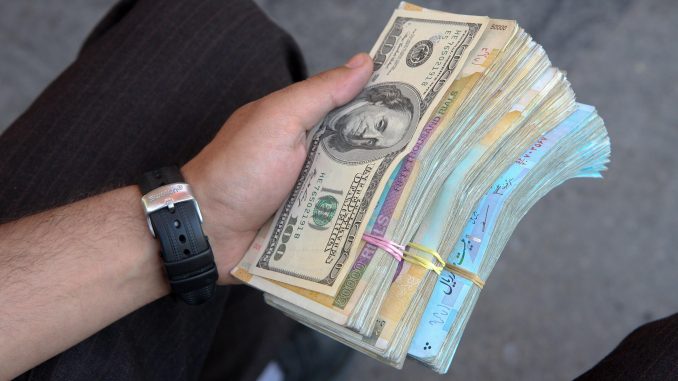
The dire condition of economy in Iran under the rule of the mullahs.
Iran’s faltering regime has begun to refer to its compounding crises as challenges and “super challenges.” The number of super challenges disclosed by Vice President Es’hagh Jahangiri, Majlis (parliament) speaker Ali Larijani, and other high-ranking officials within the regime has now approached 30 and is growing. These super challenges are the many overlapping rises faced by the regime that have dire consequences for both the regime and Iran as a whole.
Economic Crises
The economic situation in Iran affects people at every economic and social class. The regime’s own figures place the number of unemployed at over eight million, but economists estimate that the actual number may be as high as 15 million.
Liquidity Crisis
The regime has caused a crisis in liquidity by printing paper currency without collateral to back up its value. Regime sources say that the volume of printed currency without collegial equal value is increasing at a rate of 16 trillion rials per day.
Economic Depression
Iran’s economic depression has led to numerous factory and workshop closures. In addition to causing widespread unemployment, these closures have destroyed the country’s industry and domestic production.
Class Inequality
While those related to the ruling class hold 75 percent of all bank holdings in the country, 30 million Iranians live in absolute poverty. Those living in poverty are sometimes forced to sell their organs to meet their basic needs. The inequality has become such an issue that even the regime cannot ignore it. The regime’s own Chamber of Commerce chief warned, “If things continue on this track, we will be facing famine in 30 months.”
Social Crises
The water epidemic in Iran has wreaked havoc on people in many provinces. In some provinces in Iran, people lack access to clean drinking water. In others, farmers lack water to irrigate their crops. In some towns in Iran, people do not have water that is suitable to bathe in.
Meanwhile, the suicide rate rises, particularly among women. Women lack access to education, and those who do attain degrees find that they cannot find jobs or are not paid well. Depression and other mental health issues run rampant and untreated among Iranians. Drug addiction is on the rise, as is alcoholism, although alcohol and drugs are banned by the mullahs.
Dissatisfaction
Although the regime and its officials acknowledge the scope of the problem and admit they have failed to address the crises, this does nothing to help the country. These officials are worried about the consequences for the regime and the threat to its existence. The MEK and the Iranian opposition are worried about the future of Iran if the mullahs are not removed from power.
Crises are nothing new in Iran. What is new is the level of dissatisfaction by the Iranian people. Poverty, economic unrest, social upheaval, income inequality, and human rights violations have all added up for the people of Iran, and the regime’s existence is threatened. The regime has been forced to admit to its weakness.
The Iranian regime’s deputy homeland minister said this: “Right now, 80 percent of the people are unhappy about the status quo. If this reaches the 90 percent mark and public opinion is aggravated, God forbid, we will enter an ominous situation which would be very costly to get out of.”
Background
The Iranian regime is in jeopardy for two main reasons:
- The popular uprising by the Iranian people, which began in December of last year, caused major disruption to the regime’s power structure. Regime President Hassan Rouhani specifically said that everything changed after the uprising began on December 26, 2017.
- The United States ended its policy of appeasement to the mullahs, making it more difficult for the Iranian regime to bully the West into submission. In addition, Tehran has yet to sign the FATF anti-money laundering treaty. If it does not sign the treaty by the October 2nd deadline, it will lose access to banks and financial institutions in more than 200 FATF states
Effect of U.S. Sanctions
In a final, crushing blow, the second round of U.S. sanctions is set to take effect on November 4th. These sanctions will include the country’s oil and banking sectors and are predicted to have devastating consequences.
Any of these issues would be a serious problem for the regime, but the combination is insurmountable. The mullahs are aware that their claim to power is shaky, and the regime’s leaders have publicly declared that the country is in crisis.
Staff Writer
